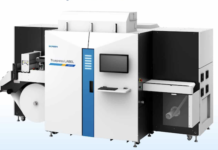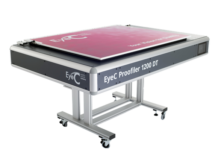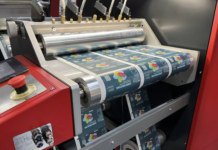According to Francesco Crotti, business consultant in digital printing, packaging and textiles, and writing for drupa, says printed books are still available, but the process of producing them has completely changed and will continue to evolve, primarily driven by a complete digital journey.
One of the significant changes we have witnessed in recent years is related to the demand for books. According to several statistics, sales volumes are increasing both in Europe and the U.S. However, traditional bookstores and supermarkets are losing market share, as online and direct sales channels are increasingly preferred by customers, representing more than 45% of total revenue for publishers. The influence of ‘BookTok’ trends has propelled certain books from relative obscurity to bestseller lists, leading publishers to reconsider their marketing strategies, especially for niche books. To manage such demand effectively, accurate forecasting has become crucial. Publishers need to serve the market on time while avoiding excessive printing that surpasses demand.
Sustainability in the publishing industry is becoming a top priority. Technological innovation and the use of local printing facilities help mitigate overproduction and overprinting, as well as address the issue of returns. These challenges can also be reduced by adjusting print runs based on pre-order data. However, smaller publishers might not have access to adequate technologies, risking stock shortages.
Publishers are also exploring ways to reduce paper usage, such as moving book notes and bibliographies online (accessible via QR codes) or optimising translation choices to reduce word counts. Format optimisation is another option, where subtle format changes (e.g. slightly smaller pages) can significantly reduce paper consumption. Furthermore, improving distribution efficiency and optimising transport are sustainability drivers, requiring strong system integration among retailers, publishers, distributors and printers.
Finally, the acceptance of digital printing for books has become definitive. Inkjet technology is highly productive and reliable, with a standard uptime of 90%. The crossover point between analogue and digital lies at around 6000 copies in black and white and 3000 copies in colour. From a quality perspective, many inkjet solutions are capable of printing on both coated and uncoated media, producing results comparable to offset printing. However, some analogue printing vendors, like Timpsons, have exited the market, with the last Timpson presses built in 2006, making digital transformation the better choice for printing books in the near future.
As a result, a few book printers are seeking new value propositions and services, focusing on on-demand production of individual books, short Service Level Agreements (SLAs) from order to shipping, and digital integration with publishers and distributors. These companies are investing not only in digital equipment but also in software business platforms, firmly believing that robust automation is the key to competitiveness and profitability.
But how can printers embark on their digital journey? The marketplace offers numerous solutions, ranging from affordable options to more expensive ones. While many of these solutions excel at managing specific processes (e.g. imposition, order management, archiving, or job tracking), they often require heavy investments in integration and customisation. Digital vendors do provide some solutions to enhance their equipment, but finding proven workflows that enable end-to-end automation of the entire book printing process remains a challenge.
In reality, automation encompasses various functionalities, from sales to administration, from production to logistics, from data security to quality management. This implies that an all-in-one book printing business management software should provide various levels of automation, like automation in managing accounts and orders. Instead of relying on emails and calls and arranging offers, sales teams can save time and expedite their services by receiving orders and generating quotes through a web portal, as well as automation in receiving files, ready to be archived and printed.
The software should also provide automation in prepress pre-flight. If customers upload uncorrected files, the system should issue alerts, enabling customers to rectify issues on their own. It should also provide automation in job management and monitoring, from individual book production to large print runs. The software should collect orders and batch them according to paper type, printing quality and finishing requirements.
Simultaneously, printed rolls should be seamlessly moved through the production process via job lists, ensuring complete control and flexibility in production, from single books to larger runs. Finally, the software should provide automation in tracking orders and shipments. After production, batches should be easily traceable, enabling book printers to arrange shipping, while publishers can monitor all operations.
Finally, a robust software platform should be compatible with different presses and finishing equipment setups, remaining independent from them. However, investing in digital technologies requires in-depth IT knowledge at the company level and the establishment of a strong in-house IT department. Only a few printing companies possess such capabilities. Typically, these companies originated from the transactional printing business, but they often struggle to venture beyond their comfort zones despite declining revenues. Additionally, many book printers have transitioned to digital printing but with a narrow vision, focusing solely on cost reduction rather than adding value for their customers, essentially using digital technology as an analogue substitute.
Each person attending drupa 2024 will have a specific agenda. However, for the book printing market, building relationships and partnerships will be strategic. Digitalisation continues to accelerate, with automation playing a significant role through software developments that orchestrate components provided by various vendors.
DRUPA
https://www.drupa.com





















